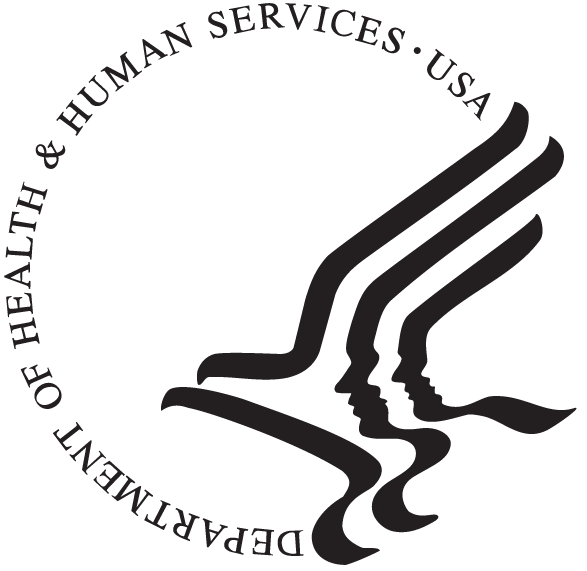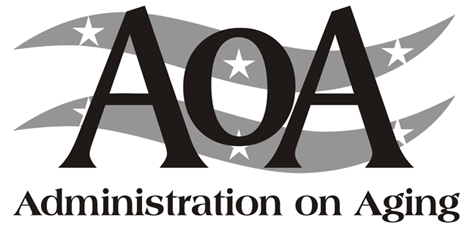ADSSP Instrument 2 of 3
2 of 3 ADSSP Definitions for Data Collection.doc
Alzheimer's Disease Supportive Services Program (ADSSP) Data Collection
ADSSP Instrument 2 of 3
OMB: 0985-0022
U
 .S.
Department of Health and Human Services
.S.
Department of Health and Human Services
Administration on Aging
Alzheimer’s Disease Supportive Services Program
Data Collection Definitions
Alzheimer’s Disease Supportive Services Program (ADSSP) data collection includes reporting basic demographic information, hours of direct service specific to the project, direct service and administrative expenditures, and – for ADSSP evidence-based projects – program entrants and completers. Although AoA encourages discussion among grantees regarding the procedures states might adopt to collect the required data, grantees are ultimately responsible for developing their own data collection protocols. States may choose to collect and share additional data but, at minimum, must submit the required data set electronically using the ADSSP Data Collection Reporting Form. Please note that name, social security number, or any other type of identifying participant information should not be reported to AoA.
Please note that data are to be reported to your ADDSP Project Officer and your ADSSP Resource Center liaison on a semi-annual basis and with the final grant report.
If you have any questions or concerns about data collection or reporting, please contact your ADSSP National Resource Center liaison.
Primary Caregiver & Person with Dementia Characteristics-
The following terms are located on tabs 1 & 2 of the ADSSP Data Collection Spreadsheet.
Program Participants
Primary Caregiver – the person who provides the most care of an individual with dementia or who is most responsible for directing and managing the care of an individual with dementia. This definition refers to informal caregivers, such as family or friends, rather than formal caregivers, such as paid healthcare professionals. While some people with dementia have more than one (1) caregiver, for the purposes of this data collection, only collect data from the one (1) person who most closely fits the role of primary caregiver. In states with consumer direction, the primary informal caregiver may also be a paid caregiver.
Person with Dementia – the person with diagnosed or undiagnosed Alzheimer’s disease or a related dementia. Related dementias include: Vascular Dementia, Dementia with Lewy Bodies, Frontotemporal Dementia, Parkinson’s disease, Normal Pressure Hydrocephalus and Creutzfeldt-Jakob Disease.
Race/Ethnicity Status
The following reflects the requirements of the Office of Management and Budget (OMB) for obtaining information from individuals regarding race and ethnicity. It constitutes what OMB classifies as the “two-question format.” When the questions on race and ethnicity are administered, respondents are to be asked about their ethnicity and race as two separate questions. Respondents should ideally be given the opportunity for self-identification and are to be allowed to designate all categories that apply to them. Consistent with OMB requirements, the following are the race and ethnicity categories to be used for information collection purposes:
Ethnicity -
Hispanic or Latino
Not Hispanic or Latino
Hispanic or Latino – a person of Cuban, Mexican, Puerto Rican, South or Central American, or other Spanish culture or origin regardless of race.
Race -
American Indian or Alaskan Native
Asian
Black or African American
Native Hawaiian or Other Pacific Islander
White
American Indian or Alaskan Native – a person having origins in any of the original peoples of North America (including Central America), and who maintains tribal affiliation or community attachment.
Asian – a person having origins in any of the original peoples of the Far East, Southeast Asia or the Indian subcontinent including, for example, Cambodia, China, India, Japan, Korea, Malaysia, Pakistan, the Philippine Islands, Thailand, and Vietnam.
Black or African American – a person having origins in any of the black racial groups of Africa.
Native Hawaiian or Other Pacific Islander – a person having origins in any of the original peoples of Hawaii, Guam, Samoa, or other Pacific Islands.
White – a person having origins in any of the peoples of Europe, the Middle East, or North Africa.
“(Alone)” – when appended to a racial category (e.g., “White (Alone)”) means that the individual only designated one race category.
Geographic Location
Urban – a central place and its adjacent densely settled territories with a combined minimum population of 50,000.
Rural – not urban.
Utilization, Service Expenditures, & Participation
The following terms are located on tab 3 of the ADSSP Data Collection Spreadsheet.
Program Participants
Participant/Client – the ADSSP program considers the primary caregiver and the person with dementia to be a single (1) dyad.
Primary Caregiver – the person who provides the most care of an individual with dementia or who is most responsible for directing and managing the care of an individual with dementia. This definition refers to informal caregivers, such as family or friends, rather than formal caregivers, such as paid healthcare professionals. While some people with dementia have more than (one) 1 caregiver, for the purposes of this data collection, only collect data from the (one) 1 person who most closely fits the role of primary caregiver. In states with consumer direction, the primary informal caregiver may also be a paid caregiver.
Person with Dementia – the person with diagnosed or undiagnosed Alzheimer’s disease or a related dementia. Related dementias include: Vascular Dementia, Dementia with Lewy Bodies, Frontotemporal Dementia, and Creutzfeldt-Jakob Disease.
Direct Services – ADSSP Specific
The goal of the ADSSP is to deliver direct services that support persons with dementia and their caregivers, so it is important that ADSSP projects track the number of the services that they are providing.
In the ADSSP statute, there are 6 specified direct services (adult day care, companion services, home health care, personal care, respite, and short term care in health care facility) of which a state must implement at least one to meet the 50% direct service requirement. For reporting purposes, only those direct services identified in the ADSSP statute are recorded as “direct services.”
The following sections contain service definitions and service units. A unit of service is defined as a specific event or a predetermined period of time spent providing a specific service. Please note that in most cases one (1) unit equals one (1) hour. For consumer-directed services, please see the “ADSSP Data FAQs” document to determine the process for determining units of service. Please round the service units up or down to the nearest whole unit. Please round the service units up or down to the nearest whole unit.
Adult Day Care – (unit=1 hour) an organized program that takes place outside of the home and provides care for the person with dementia in a congregate setting, but is not a residential setting. Services are supervised and include social engagement or health care for elders who require skilled services or physical assistance with activities of daily living. These services may be also referred to as Adult Day Services and Adult Day Health Services.
Companion Services – (unit=1 hour) companion services include non-medical care, supervision and socialization provided to a participant/client. Companions may assist or supervise the individual with such tasks as meal preparation, laundry, light housekeeping, and shopping. Companion services are typically provided in a participant/client’s home but may include time spent accompanying participant/client to access services outside of the home. These services may be also referred to as Homemaker Services.
Home Health Care - (unit=1 hour) in-home assistance that addresses medical needs, such as administering medications and physical therapy. These services may be also referred to as Health Maintenance Care.
Personal Care – (unit=1 hour) in-home assistance with daily living activities, including bathing, dressing, eating, meal preparation, and light housekeeping. These services may be also referred to as Personal Assistance.
Respite – (unit=1 hour) an interval of rest or relief OR the result of a direct dementia-specific service or supportive intervention that generates rest or relief for the caregiver and/or care recipient.
Short Term Care in Health Facility – (unit=24 hours) services provided on a short/long term basis in a residential or assisted living facility, nursing home, or other long-term care institution because of the absence/need for relief of the regular caregiver. These services may be also referred to as Institutional Caregiver Respite Care.
Units, Expenditures and Related Definitions
Units – a specific event or a predetermined period of time spent providing a specific service. Please note that to avoid duplicative counting, if the person with dementia attended one (1) hour of adult day care for both the purpose of home health care and to provide respite for the caregiver, only one (1) unit of adult day service would be counted.
ADSSP Expenditures – outlays/payments made by the ADSSP state grantee and their sub-grantees using ADSSP federal funds and state-provided match to provide ADSSP ervices.
Total Federal Funds Spent on Direct Service Expenditures – expenditures of federal grant funds administered by ADSSP state grantee and their sub-grantees on behalf of the ADSSP grant.
Total Federal Funds Spent on Administrative Expenditures – expenditures of federal grant funds administered by ADSSP state grantee and their sub-grantees on behalf of the ADSSP grant.
Percentage of Federal Funds Spent on Direct Service Expenditures =
)
(
x 100
Total Federal Funds Spent on Direct Service Expenditures_________________
Total Federal Funds Spent on Direct Service + Total Federal Funds Spent on Administrative Services
Percentage of Federal Funds Spent on Administrative Expenses =
(
x 100
)
________ Total Federal Funds Spent on Administrative Expenditures_______________
Total Federal Funds Spent on Direct Service + Total Federal Funds Spent on Administrative Services
For Evidence-Based Programs Only:
Program Entrants and Completers
The following terms are for Evidence-Based programs only.
Program Entrants – the number of caregivers or persons with dementia or caregiver/person with dementia dyads who enroll and begin the intervention.
Completers – the number of caregivers or persons with dementia or caregiver/person with dementia dyads who complete the intervention during the reporting period.
| File Type | application/msword |
| Author | MEisenhart |
| Last Modified By | DHHS |
| File Modified | 2010-05-11 |
| File Created | 2010-03-07 |
© 2025 OMB.report | Privacy Policy